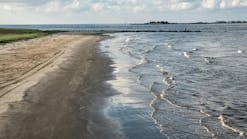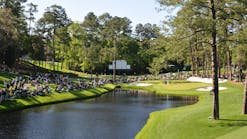The City of Miami Beach, Fla., is a beautiful resort community nestled between the Atlantic Ocean and Biscayne Bay. Miami Beach offers picturesque beaches, amazing nightlife, an Art Deco District that is listed on the National Register of Historic Places and some of the most sought-after real estate in the U.S.
Miami Beach is built on natural and manmade barrier islands—essentially sand dunes augmented by dredge from Biscayne Bay. Like all modern cities, the level of infrastructure—pipe networks for potable water, sewage and storm water, along with roads and bridges—determines the possibility for the city and its inhabitants to thrive. Most people take this infrastructure for granted.
The Problem
Miami Beach residents, however, are keenly aware of their city’s storm water system. Much of the system that transports the storm water directly to the sea was built just a few inches to a few feet above sea level. Over the years, these outlet structures have settled and sea levels have risen, often causing the storm water system to fill with seawater. Other elements of the system include vertical wells, which were designed to funnel run-off directly into the groundwater table. Increased pressure caused by rising sea levels, storms and king tides have exceeded the capabilities of this system, and instead, sea water is pushing groundwater back up through the vertical wells into streets.
“It’s not just the water coming over the shoreline—it’s the water under the city also that we have to look at,” said Miami Beach Chief Engineer Bruce Mowry.
Additionally, extreme tides can cause saltwater to push through the storm water pipes and flood the city, accelerating the damage. If the storm water system is filled with sea- and groundwater, it causes the seawater to push up onto streets and residential and commercial properties, where it causes blocked roads, inconvenienced pedestrians, closed businesses and damaged homes. Saltwater damages roads and green areas, increasing the cost to the city for repairs.
Heavy rainfall events setting new records have been increasing in the past 30 years. Prior to 1980, multi-decadal fluctuations in extreme rainfall events are explained by natural variability. A team of scientists at the Potsdam Institute for Climate Impact Research detected a clear upward trend in the past few decades toward more unprecedented daily rainfall events. These once-anomalous events have increased in frequency 24% in the central and eastern U.S.
Miami Beach is spending over $500 million to brace for the scientific projection that suggests 3 ft of sea level rise by the turn of the century.
“Obviously, when you do the math, $23 billion worth of private property value versus the $300 to 500 million we’re doing in storm water improvements to buy us another 30 to 50 years, it makes all the sense in the world,” said Eric Carpenter, director of Miami Beach Public Work.
The Solution
Miami Beach is investing over $500 million in pump stations, seawalls and valves to solve the problem. Around 60 pump stations will be built over the next five years. The pumps will actively move excess water out of the city, but they require time and substantial effort to complete.
While that work is ongoing, contractors such as Juan Barreneche, P.E., and his team at Southern Underground Industries are protecting the city by installing WaStop backflow prevention check valves in the storm water system as part of the City-Wide High Tide Mitigation Project to prevent sea- and groundwater from filling up the system while allowing rainwater to flow through and out of the system. According to Barreneche, the key is balancing protection from tidal events while maintaining storm runoff capacity.
The first big test came with the 2014 fall king tides, which challenged the city storm water improvements, but the streets of South Beach remained dry. Some brief flooding after a storm quickly drained to the bay, and some puddles around drains were a far cry from the flooding scenes from years past, with people wading across streets and cars being surrounded with saltwater.
Miami Beach Mayor Philip Levine said 2014’s king tide is just a start. “There’s no one up here in our city who’s going to declare victory,” he said. “We are encouraged by the results that we experienced this week.”
The Results
So far, approximately 100 WaStop check valves have been installed into the Miami Beach storm water system during 2014 and 2015. WaStops are often installed in original clay pipes, which have highly variable sizes. Even so, the WaStop’s unique stainless steel body and mounting brackets allow it to be installed quickly and easily inside any existing pipe. The WaStop’s memory membrane allows it to function perfectly in horizontal and vertical orientations. The membrane has a pulsating flow action, which increases flow velocity, keeping the pipe clean. The pulsating flow allows sediment and debris to pass through the valve, making clogs and costly maintenance virtually nonexistent. WaStop will also help solve the city’s problem of the vertical wells by allowing rainwater to flow down unimpeded while preventing groundwater from pushing up into the street. WaStop combines unprecedented reliability with virtually no maintenance to give peace of mind and dry feet to the residents of Miami Beach.






